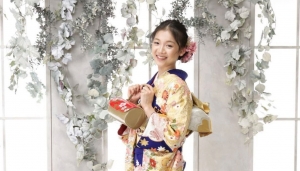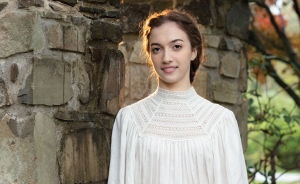The Dancing Bookworm
As the print under my name above suggests, I am a dancer with the Shen Yun’s International Company. I’ve toured with the group for nearly three years now, and every season from December to May I travel around the globe to perform and share China’s glorious ancient culture. Sounds pretty glamorous, right? When you actually meet me in person, however, it may be a bit hard to believe since offstage I'm klutzy and quite the bookworm.
To tell you the truth, I’m more of the math-and-science type, the typical Chinese girl who wears thick glasses and reads thick books. A few years ago, all that mattered to me was getting good grades and getting into a good college. So what’s a bookworm like me doing in a dance company?
Although I was born in Shanghai, most of my childhood was spent in the US of A. It’s been almost 10 years since I’ve been back to China, but I still remember the gray sidewalks, huge department stores, and the rowdy street-side markets where everyone bought meat and produce. I remember old ladies in big parks furiously arguing about whose grandchild’s academic achievements were of highest merit.
What remained of 5,000 years of civilization seemed to only exist at tourist attractions and, even then, it was probably nothing compared to the grandeur of China’s past. As might be expected, I didn’t exactly embrace my heritage. I was ashamed of being Chinese.
History books record that China’s surrounding nations paid tribute to the Middle Kingdom. Kings of neighboring countries had to be recognized by China’s Emperor, the Son of Heaven. I’ve always wondered: What made those countries respect China so much? Could it be its culture that was once known as “semi-divine?” Whatever it was, where did it go?
Chinese people of the past emphasized moral values and virtue. During the Tang Dynasty over a thousand years ago, the sliding wooden doors of the commoners’ houses had no locks. None were needed. Today, a bolted bicycle can disappear in the course of minutes. What has happened to China?
Shen Yun aims to use classical Chinese dance to revive Chinese culture, to show China as it truly was. So when I began my training at the Fei Tian Academy of the Arts, which prepares many of Shen Yun’s dancers and musicians, I was first required to take Chinese history classes. After learning, rehearsing, and reading the stories behind the dance pieces, I began seeing for the first time how grand and rich traditional Chinese culture truly is.
Dance is painful, and dance is tiring, but I think it’s a worthy price to pay for the honor of depicting something so pure and dignified on stage.

Ashley Wei
Contributing writer
March 2, 2012






